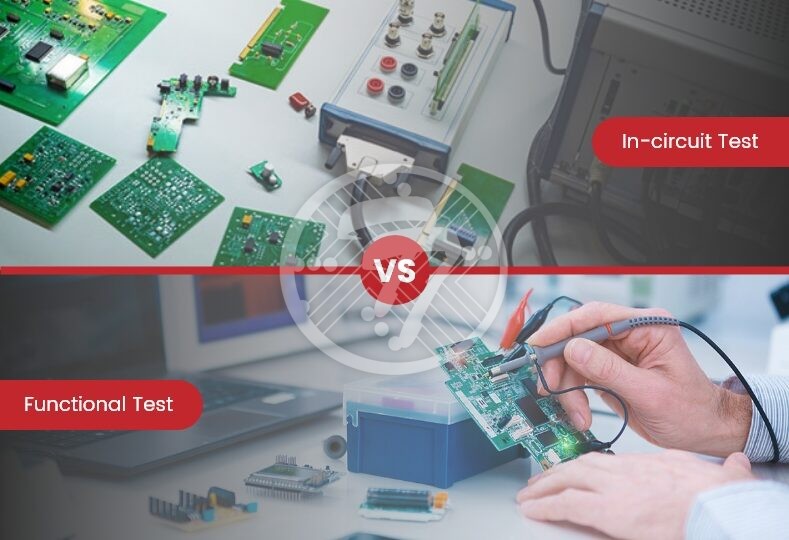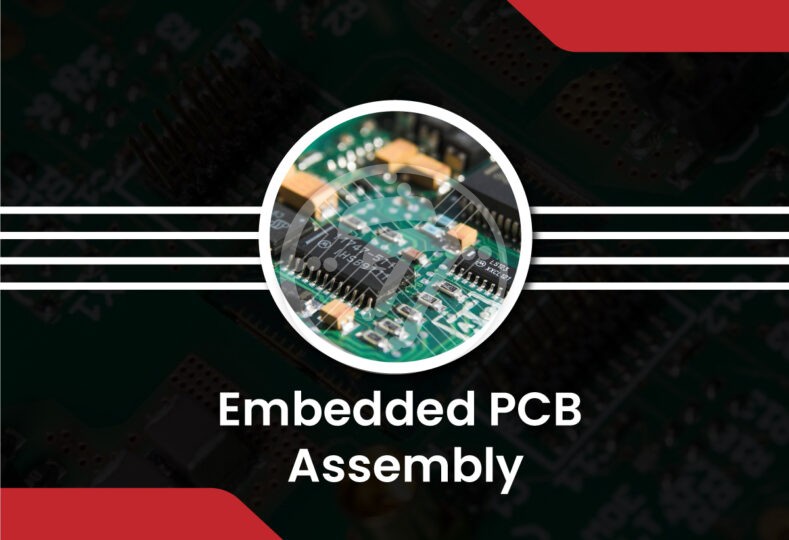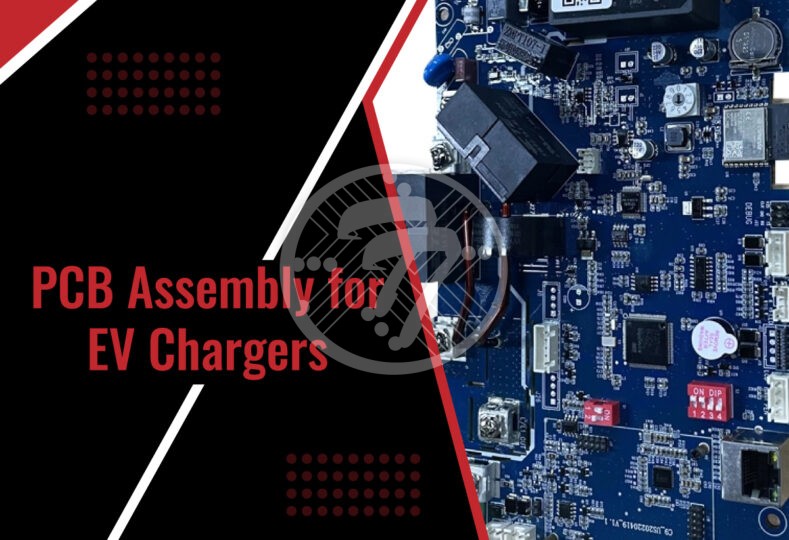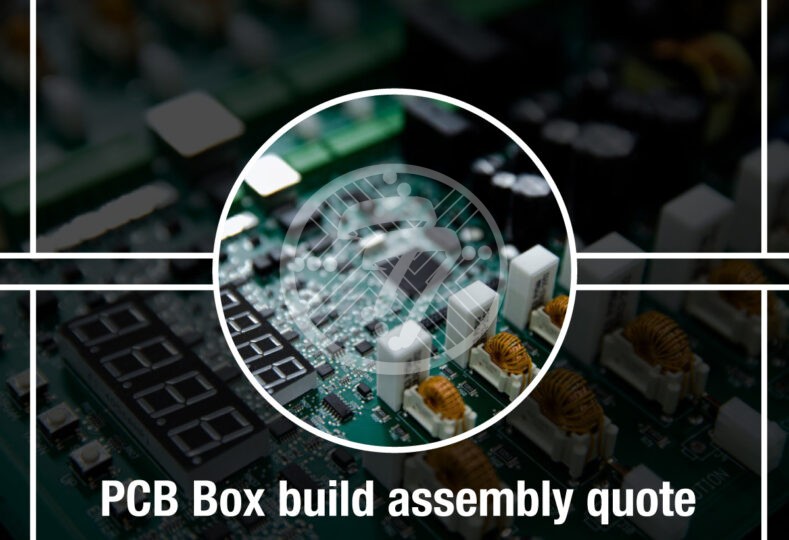In-Circuit Testing (ICT) vs Functional testing in PCB assembly – When to use?

In the world of printed circuit board (PCB) assembly, testing plays a crucial role in ensuring the quality and functionality of the final product. Two common testing methods used are In-Circuit Testing (ICT) and Functional Testing (FCT). While both aim to identify defects and faults in the PCB assembly, they differ in their approach and scope. In this article, we will explore the differences between ICT and functional testing and discuss when to use each method.
What is in-circuit testing (ICT)?
In-Circuit Testing is a method used to test electronic components and connections on a PCB to ensure their proper functioning. It is typically performed early in the manufacturing process to detect and rectify any issues before delivering defective products to customers. ICT involves connecting the PCB to specialized testing equipment that places test probes or pins at critical test points on the board. These probes measure various parameters such as resistance, capacitance, inductance, and shorts. Additionally, ICT checks that electronic components are correctly installed and connected.
This testing method involves measuring and testing the individual components on a PCB. It is performed by connecting the PCB to specialized testing equipment, which places test probes or pins at key test points on the board. These probes measure parameters such as resistance, capacitance, inductance, and shorts. The primary goal of ICT is to identify manufacturing defects, such as open connections, solder shorts, and incorrect or missing components.
ICT is designed to catch manufacturing defects, open connections, solder shorts, and incorrect or missing components on a PCB. It provides a comprehensive check of the circuit, detecting power and ground shorts in a relatively short period of time. The testing process is controlled by specialized software, which allows for accurate measurements and reduces the risk of misjudgment. With ICT, manufacturers can identify which part or circuit is connected, making it easier to troubleshoot and maintain the PCB assembly. This not only speeds up the production process but also improves product quality.
What are the advantages of ICT?
There are several advantages to using ICT in PCB assembly testing:
- Detection of Manufacturing Defects: ICT can quickly identify defects in the PCB assembly, ensuring that the final product meets the required quality standards.
- Fast and Accurate Testing: ICT is known for its speed and accuracy. The testing process can be completed in a matter of seconds, allowing for efficient testing of large volumes of PCB assemblies.
- Computer-controlled Testing: ICT is controlled by a computer program, which ensures accurate measurements and reduces the risk of misjudgment or missed measurements.
- Facilitates Maintenance and Troubleshooting: ICT provides valuable information about the connectivity of different parts or circuits on the PCB. This information can be used for maintenance purposes and to speed up the production process.
What are the disadvantages of ICT?
While ICT has its advantages, there are also some limitations to consider:
- Limited Scope: ICT focuses on individual component testing and may not provide a comprehensive evaluation of the overall functionality of the PCB assembly.
- High Upfront Costs: Setting up an ICT system requires specialized equipment and expertise, which can be expensive initially.
- Inability to Test Certain Components: ICT may not be suitable for testing components that require power or specific environmental conditions to function properly.
What is functional testing (FCT)?
Functional testing (FCT) is a testing method that evaluates the overall functionality of the PCB assembly as a whole. Unlike ICT, which focuses on individual components, FCT tests the entire PCB assembly to ensure that it performs as intended. This testing method simulates the operating environment of the device under test (DUT) and checks for various functional parameters such as voltage, current, power, power factor, frequency, and duty cycle.
What are the advantages of FCT?
Functional testing offers several advantages in the PCB assembly process:
- Comprehensive Evaluation: FCT provides a holistic evaluation of the PCB assembly’s functionality, ensuring that all components work together as intended.
- Real-world Simulation: FCT simulates the operating conditions of the PCB assembly, allowing manufacturers to test its performance under realistic scenarios.
- Cost-effective Testing: By testing the entire PCB assembly, FCT can identify potential issues that may arise from the interaction of different components, reducing the need for expensive system-level testing.
- Improved Product Quality: FCT helps to identify any design or manufacturing flaws that may affect the performance or reliability of the PCB assembly, leading to improved product quality.
What are the disadvantages of FCT?
Despite its advantages, FCT also has some limitations:
- Time-consuming Testing: FCT typically requires more time compared to ICT due to the comprehensive nature of the testing process.
- Higher Complexity: FCT requires specialized equipment and expertise to set up and execute properly, which can increase the complexity of the PCB assembly process.
- Limited Fault Detection: While FCT can identify functional issues, it may not detect certain manufacturing defects or component-level faults that ICT is capable of catching.
When to use ICT and functional testing?
Both ICT and functional testing have their strengths and weaknesses, making them suitable for different stages of the PCB assembly process. Here are some scenarios where each testing method can be beneficial:
When to use ICT?
- Use ICT when you need to identify manufacturing defects, such as open connections, solder shorts, or missing components.
- ICT is valuable for testing large volumes of PCB assemblies quickly and accurately.
- When you need to ensure the connectivity of different parts or circuits on the PCB for maintenance and troubleshooting purposes, ICT can provide valuable insights.
When to use functional testing?
-
- Use FCT when you need to evaluate the overall functionality and performance of the PCB assembly as a whole.
- FCT is ideal for simulating real-world operating conditions and testing the interaction of different components.
- When you want to ensure that the PCB assembly meets the required functional parameters and performs as intended, FCT is an essential testing method.
Conclusion
In-Circuit Testing (ICT) and Functional Testing (FCT) are two commonly used methods in PCB assembly testing. While ICT focuses on individual component testing and detecting manufacturing defects, FCT evaluates the overall functionality and performance of the PCB assembly. Understanding the differences between these testing methods is crucial for selecting the appropriate approach based on the specific requirements of your PCB assembly. By leveraging the strengths of ICT and FCT, manufacturers can ensure the quality and reliability of their PCB assemblies in various applications and industries.
Technotronix offers professional PCB assembly and testing services with 44+ years of expertise. Ensure flawless PCB assembly with our comprehensive suite of in-circuit testing (ICT) and functional testing (FCT) services. Let us optimize your electronics manufacturing process for peak performance and reliability that meets the quality standards, including ISO-9001:2015, RoHS, and more. If you have any questions or any requirements related to PCB assembly service, please feel free to contact us via email at [email protected] or request a quote for PCB assembly services!









